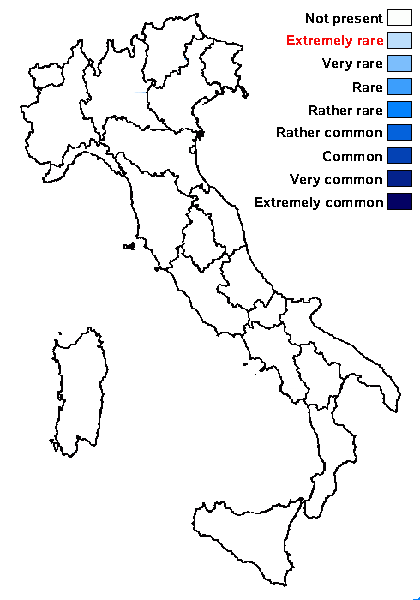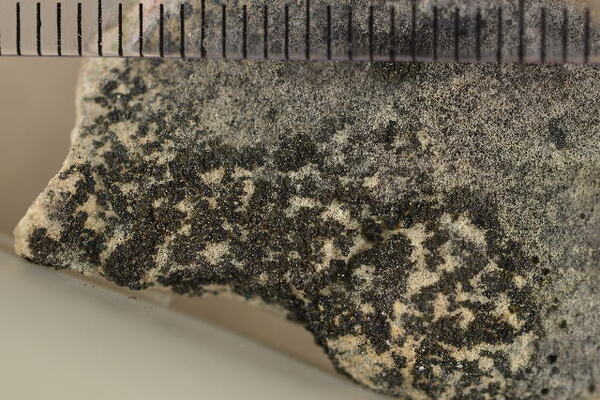Placynthium baumgartneri (Zahlbr.) Gyeln.
Borbasia, 1: 53, 1939.. Basionym: Pterygium baumgartneri Zahlbr. - in Degen, Flora Velebitica, 3: 317, 1938.
Synonyms: Placynthium coerulescens (Harm.) Gyeln.; Pterygium coerulescens Harm.
Distribution:
Description: Thallus crustose-placodioid, rimose-areolate in the central parts which often tend to die-off, distinctly lobed at margins, brownish grey, grey-pruinose, rarely delimited by a blue-green prothallus, forming up to 15 mm wide rosettes. Lobes flattened, contiguous, up to 1.5 mm long and 0.2-0.8 mm wide, smooth. Thallus more or less cellular throughout. Apothecia biatorine, black, adnate, 0.3-0.4(-0.5) mm across, with a flat disc and a thin, finally sometimes excluded proper margin. Proper exciple and epithecium bright green, K-; hymenium colourless, c. 60 μm high, I+ blue; hypothecium colourless. Asci 8-spored, apically thickened, with an amyloid cap. Ascospores 3-septate, hyaline, narrowly ellipsoid, straight or slightly curved, (21-)23-30(-35) x (2-)3-4(-5) µm. Photobiont cyanobacterial, Scytonema-like. Spot tests: all negative. Chemistry: without lichen substances. Note: on steep faces of calcareous rocks; known from Southern and Central Europe, with several records from Austria and France (paratype of P. coerulescens), perhaps overlooked elsewhere, or misidentified as P. subradiatum; to be looked for in Italy.
Growth form: Crustose
Substrata: rocks
Photobiont: cyanobacteria, filamentous (e.g. Nostoc, Scytonema)
Reproductive strategy: mainly sexual

Predictive model
Herbarium samples
Growth form: Crustose
Substrata: rocks
Photobiont: cyanobacteria, filamentous (e.g. Nostoc, Scytonema)
Reproductive strategy: mainly sexual

Predictive model
| Herbarium samples |
 Index Fungorum
Index Fungorum
 GBIF
GBIF



